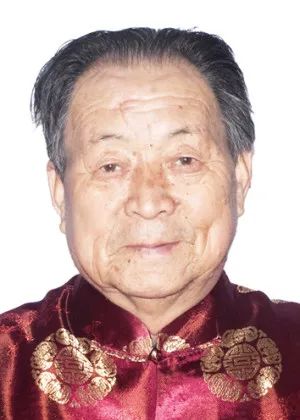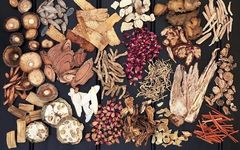 ▲Chen Weichuan, Renowned National TCM Physician (1939.5-)
▲Chen Weichuan, Renowned National TCM Physician (1939.5-)
Chen Weichuan, a renowned national TCM physician, is the chief physician at the Ningxia Hui Autonomous Region TCM Hospital, and has accumulated rich clinical experience in internal medicine and difficult diseases. Here, he shares his experience in treating exogenous diseases, emphasizing the importance of light, clear, and dispersing methods to eliminate pathogens, for the benefit of his peers.
Etiology and Pathogenesis
Chen Weichuan believes that without the invasion of external pathogens, exogenous diseases cannot occur. Wind, cold, heat, dampness, dryness, and fire are the causes of exogenous diseases. As stated in the “Essentials of Exogenous Pathogenic Factors”: “The symptoms of exogenous diseases do not exceed the six qi: wind, cold, heat, dampness, dryness, and fire.” Exogenous diseases mainly refer to the febrile diseases described in the “Shang Han Lun” and “Wen Bing Xue” such as cold damage, wind-heat, heat from summer, and damp-heat. The pathogenic factors of cold damage enter through the skin and hair, moving from the exterior to the interior; while the pathogenic factors of warm diseases enter through the mouth and nose, moving from above to below. The lung is a delicate organ, residing in a clear and high position, externally connected to the skin and hair, responsible for defending the body, and opening to the nose. Therefore, when the six excesses invade, the pathogens enter through the skin or the mouth and nose, easily harming the lung’s defensive qi. As stated in the “Su Wen: On Coughing”: “The skin and hair are connected to the lung; the skin and hair first receive the pathogenic qi, and the pathogenic qi enters through this connection.” Thus, the etiology and pathogenesis of exogenous diseases are due to the six excesses invading the skin or entering through the mouth and nose, easily harming the lung’s defensive qi, leading to symptoms such as fever, chills, nasal congestion, and cough, which are manifestations of the defensive qi and upper jiao lung system.
Clinical Medication
Based on the causes and pathways of exogenous diseases, Chen Weichuan first proposes that “for every degree of exterior syndrome, one must use an equal degree of exterior medicine,” adhering to the principle that “if it is on the skin, it should be released through sweating.” This means using light, clear, and dispersing methods to resolve the exterior and eliminate pathogens. Since exogenous pathogens enter through the skin or the mouth and nose, they easily invade the lung’s defensive qi, which clinically manifests as symptoms of lung defensive qi dysfunction. Therefore, treatment focuses on the lung. The “Clinical Guidelines for Medical Cases: Lung Obstruction” states: “To treat lung dysfunction, one should primarily use light and uplifting methods.” The warm disease scholar Ye Tianshi emphasizes the principle of “light medicine entering the lung,” creating light and cool formulas to treat warm disease lung defensive qi syndromes. Wu Jutong summarized Ye Tianshi’s experience, stating, “The upper jiao is like a feather; it cannot be lifted without lightness.” This means that light, uplifting, and dispersing substances are easy to reach the disease site and disperse the qi mechanism, which is beneficial for expelling pathogens. Chen Weichuan summarizes the experiences of predecessors and combines them with his years of clinical practice, proposing that the treatment of exogenous diseases should be light, clear, and dispersing, selecting light and thin-tasting herbs such as honeysuckle (Jin Yin Hua), forsythia (Lian Qiao), mint (Bo He), lotus leaf (He Ye), and schizonepeta (Jing Jie) for their light and clear dispersing properties. Since exogenous diseases initially manifest on the exterior and in the defensive qi, resolving the exterior is of primary importance. Additionally, due to the short duration and rapid changes of exogenous diseases, Chen Weichuan emphasizes intercepting pathogens early when the disease first arises, quickly expelling the pathogens from the surface, allowing for recovery at the initial stage. Therefore, the treatment of exogenous diseases should be light, clear, and dispersing, ensuring the complete expulsion of pathogens, which is also a clinical manifestation of preventing disease transformation and protecting the righteous qi.
Typical Medical Case
Wang, female, aged 36. Initial diagnosis on February 8, 1999. Persistent dry cough for over 4 months. The patient developed a cough after catching a cold in November 1998. After anti-infection treatment, the phlegm stopped, but the cough persisted, varying in severity, and repeated use of anti-inflammatory cough medications was ineffective. In the past two weeks, the dry cough worsened, especially at night, with no fever or chills, normal appetite, regular urination, red tongue, thin coating, and wiry and thin pulse.
Upon initial diagnosis, it was believed that the patient’s prolonged cough had depleted lung yin, thus the treatment focused on nourishing yin and moistening the lung. After taking 4 doses of Chinese medicine, there was no improvement in symptoms. Chen Weichuan pointed out that the initial cause was exogenous, and repeated use of lung-constricting substances had not cleared the residual pathogens, leading to lung qi not being able to disperse. Treatment should focus on dispersing the lung rather than constraining it, and thus he prescribed substances to clear and disperse lung qi for effective results.
Proposed Formula:Mulberry leaves (Sang Ye), Perilla leaves (Zi Su), Loquat leaves (Pi Pa Ye), Radix Peucedani (Qian Hu), Cicada slough (Chan Tui) each 12g, Platycodon (Jie Geng), Scutellaria (Huang Qin) each 10g, Licorice (Gan Cao) 6g. Decoction for oral administration, once daily.
After 3 doses, the patient’s cough significantly reduced, and after another 3 doses, the cough occurred occasionally. At this point, Chen Weichuan stated that the residual pathogens had been eliminated, and he then prescribed substances to nourish yin and moisten the lung to consolidate the effect.
Later, the patient reported complete recovery.
Important Statement:
Due to individual differences in constitution and condition, the formulas and dosages in this case are only applicable to the patient at that time. Without proper TCM diagnosis and treatment, do not replicate the prescriptions and dosages from this case. Readers in need should seek treatment at a legitimate hospital to avoid delaying their condition. ■
【Source: China Traditional Chinese Medicine News, content selected from “China Traditional Chinese Medicine News” November 2, 2022, Fifth Edition, Jia Aimin, Gao Ruhong, Ningxia Hui Autonomous Region TCM Research Institute】⊙Copyright StatementThe article is sourced from the internet, and the copyright belongs to the original author. If there is any infringement, please contact us for removal. Thank you.

